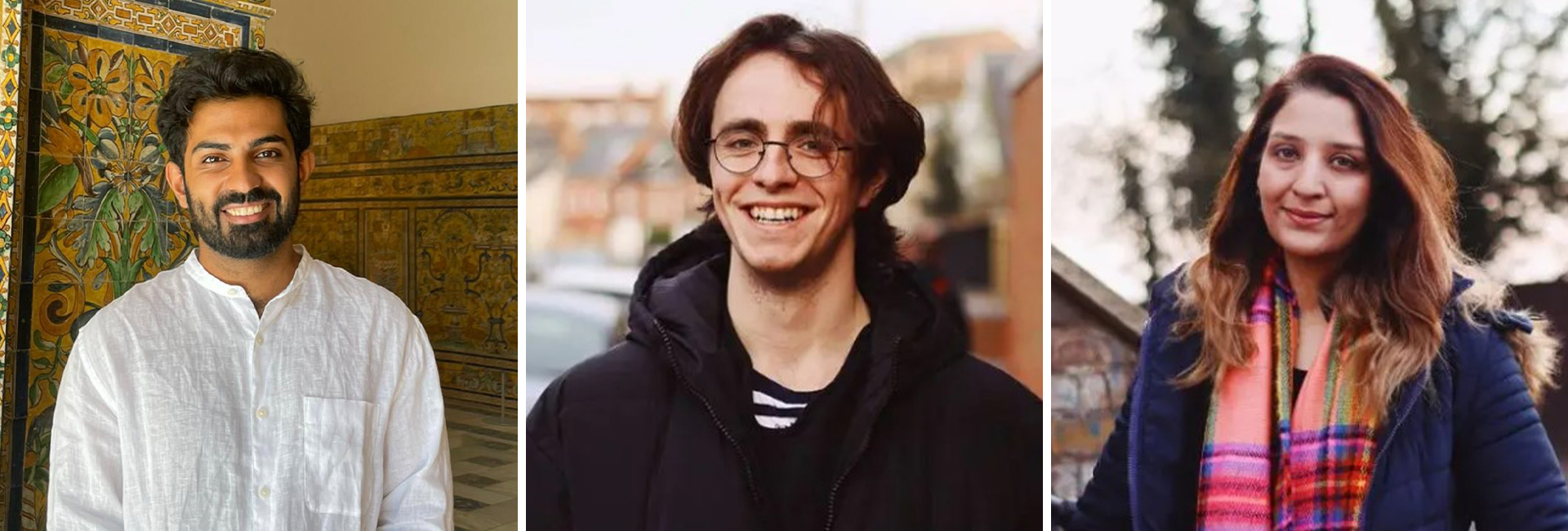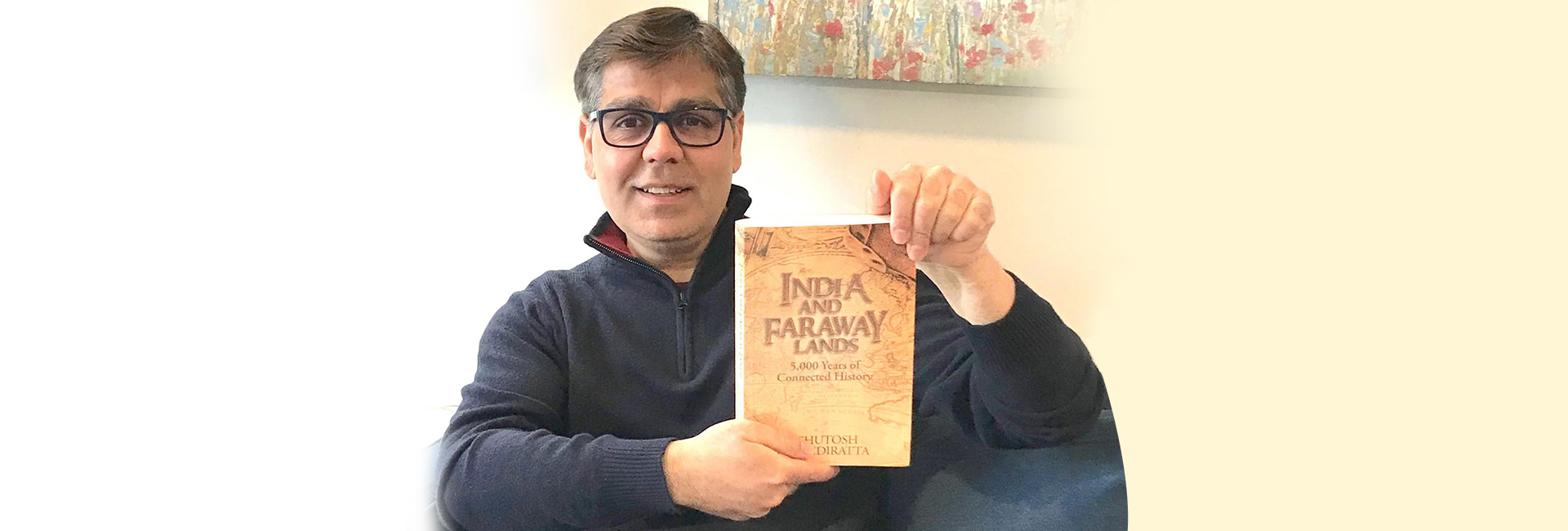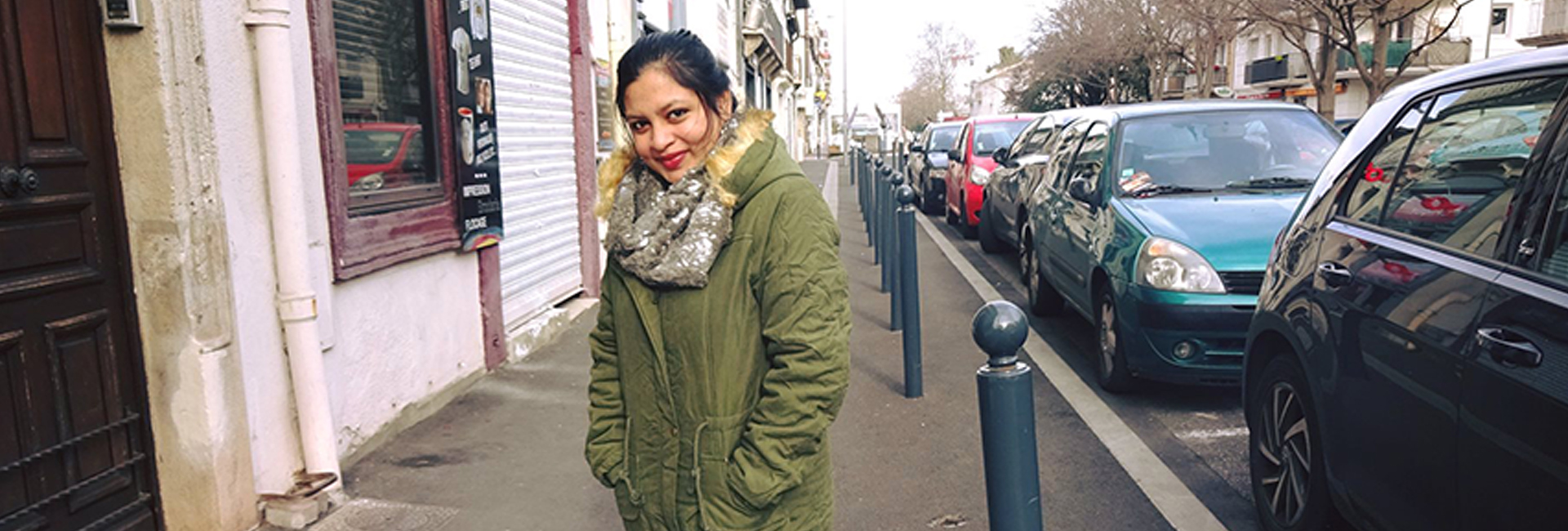(August 17, 2024) “All the gold and silver that we owned, I, an 11-year-old child at the time, dug a deep pit and buried it to keep it safe, because we didn’t think we wouldn’t return. We thought we will be coming back, but we couldn’t,” lamented 84-year-old Dharampal, who migrated from Sialkot in Pakistan to Jammu, then Amritsar, and ultimately Bombay during the 1947 partition. He shared his memories of those painful days with the Project Dastaan team that has been working to facilitate virtual reconnections of people to the homes they left during the tragic times.
Dharampal’s father was tragically left behind during Partition on the other side of the border. “My uncle said, ‘I’ll give you the wood, I’ll give you all the wheat we have, get my brother back.’ They said, ‘We are not interested.’ My uncle couldn’t get his brother and he was later killed’.”
Dharampal’s story echoes the countless journeys undertaken by refugees during the partition crisis. The event affected the entire subcontinent who had to suffer irreparable loss and trauma for the rest of their lives. About 14 million people migrated and thousands perished during the 1947 partition.
View this post on Instagram
Launched in 2018 Project Dastaan serves as a poignant reminder that ordinary people are the most impacted when a nation is torn apart. Their lives are uprooted forever. In 2023 Project Dastaan became part of the British Key Stage 3 school curriculum. The peace-building initiative has also facilitated reconnection of the Bangladesh nationals.
Recreating memories
Co-founded by Sparsh Ahuja from India, Sam Dalrymple, an Indian of British descent, and Sadia, a Pakistani national, the project is a tribute to the legacy of millions of refugees whose lives were changed overnight. The nationalities of Project Dastaan’s co-founders represent an interesting amalgamation of people deeply affected by the partition of India.
Their project has been facilitating virtual reconnections to the homes of partition survivors. About 50 percent of those interviewed have been able to see their childhood homes using VR technology. While attempts for all were made, the changed landscapes made it difficult, and impossible for other cases.
“One of the things we’ve learned throughout this entire journey is just how absurd it is that it takes a team of 30 volunteers spread across five different countries with the world’s most cutting-edge technology to take back grandparents who literally live just across the border. To all the people out there watching this video we have just one message: In an ideal world a project like this shouldn’t exist,” says Sparsh Ahuja in an interview.
The documentary filmmaker and founder of Project Dastaan, Sparsh is a 2020 National Geographic Explorer, the youngest-ever recipient of the CatchLight Fellowship. He graduated as a FitzRandolph Scholar in PPE at the University of Oxford. His debut film, Child of Empire, premiered at the Sundance Film Festival 2022, and his latest documentary short, Birdsong, screened at SXSW, Sundance London, Palm Springs ShortsFest, where it won Special Mention: Best Documentary Short and was shortlisted for the Grierson Award. It was later acquired by The Guardian.
Bringing past to present
Talking about the process that they use to reconnect partition survivors to their childhood homes, Sam Dalrymple who happens to be the son of British descent author William Dalrymple remarks, “We begin by interviewing the partition witnesses. We then get our cross-border volunteer network to track down the locations and try to find any areas which may have survived. A lot of the places have changed, both countries have industrialised massively since 1947. And yet there’s always something which remains in each of these villages or towns. Wherever we have been, there’s a mosque, a well, a mandir, maybe the neighbour’s house that has survived. After this, we send our filming team out to recapture those areas.”
Like his co-founders Sam too has a deep connection with the subcontinent as many of his British ancestors were born, raised and died in India with their graves in different parts of the country. His book Shattered Lands: The Five Partitions of India 1935–1975, is due to be published in 2024.
“We edit the filmed content into a full six-minute experience. This is then taken back to the original partition witness shown to them and then exhibited more broadly to the general public in order to educate about partition and about the stories of those who’ve survived it,” he explains.
Sam Dalrymple is the Co-Founder and COO of Project Dastaan. He graduated as a Sanskrit and Persian scholar from the University of Oxford, where he served as president and co-founder of the Oxford University Silk Road Society. He has worked with The Aga Khan Trust for Culture (a multibillion foundation), Turquoise Mountain and Vagaband. Sam speaks proficiently in Hindi and Urdu, and can converse in basic Farsi.
Inspired by the pains of their grandparents
“When my Nanu was just seven years old, he was forced to migrate from a small village in modern-day Pakistan called Bela, and moved to New Delhi. I’d see him in the corner of our house in Delhi, he’d be scribbling Urdu in his Diary and I’d ask him Nanu , you know how to write Urdu? ” And he’d say, ‘yes, this is what we learnt at school but he’d close the diary quickly and would say ‘but now that time is gone,” shared Sparsh Ahuja.
It was during a coffee chat at Oxford University that Sparsh and his friend Ameena Malak from Pakistan exchanged their grandparents’ stories of Partition. They realised that their grandparents had travelled almost identical journeys in opposite directions, each yearning to go back home. However, due to wars, old age, and trauma, there were still too many barriers for either to return. This sparked the idea for Project Dastaan.
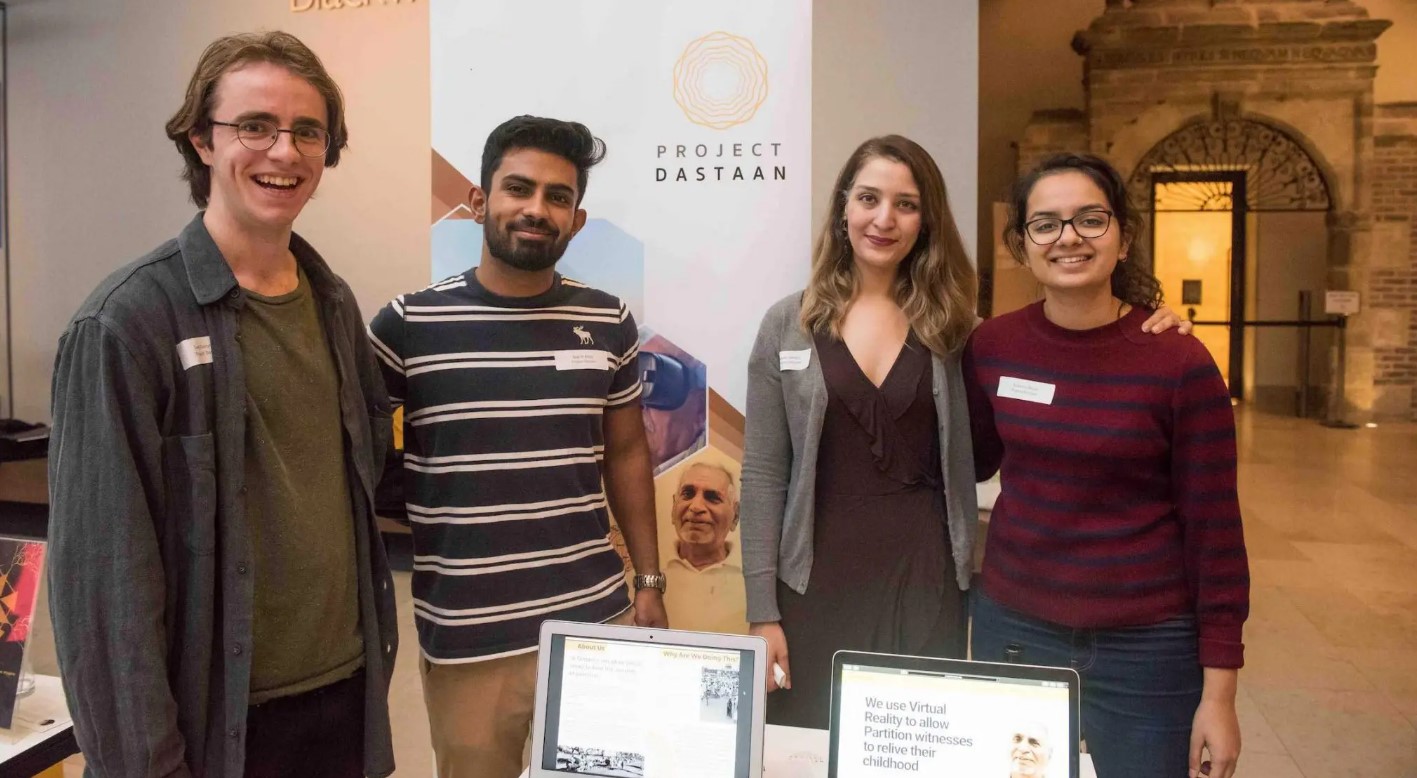
From left to right: Sam Dalrymple, Sparsh Ahuja, Sadia Gardezi and Ameena Malak
They brought their friends Sam Dalrymple and Saadia Gardezi who were studying at Oxford as well, on board and came up with the plan of a making sure every Partition survivor who they could find, would go home again, whether through virtual reality, video calls to locals who still remember them, or even an actual physical return, however difficult.
Across the border
Pakistan-origin Saadia Gardezi is the co-founder and creative lead of Project Dastaan. The illustrator and writer has worked as the Op-Ed editor for The Nation, one of Pakistan’s leading newspapers. Saadia graduated as an M.Phil. scholar in South Asian Studies, of the Weidenfeld Hoffmann Leadership Program at Oxford University. While pursuing Ph.D. at the University of Warwick she also works part-time as workshop facilitator and graduate tutor.
“We build bridges between India and Pakistan, and hope to educate people about the history and shared cultures of India and Pakistan through storytelling and films.
As Pakistan lead, I coordinate between volunteers and cultural heritage organisations in Pakistan, UK and India,” she mentions. For project Dastaan she has been deeply involved in researching partition stories and interviewing survivors.
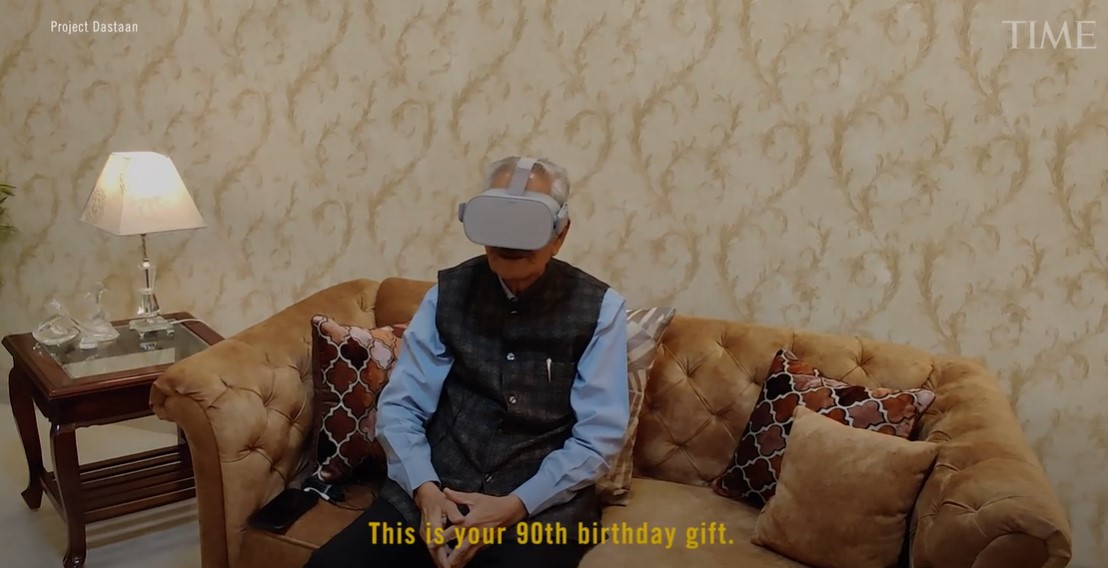
A still from the TIME’s coverage of Project Dastaan
“I have always had this sense of hankering of figuring out along that journey what changed, what took these communities that had been living for centuries together and turned them into enemies overnight. We wanted to go beyond just talking about the partition. We wanted to take these people back home,” says Sparsh.
Although they connected many people over phone calls, in this technological era virtual reality seemed the powerful solution to the yearning of partition survivors. “Old age and traumatic memories and the general fear linked to going back, still holds them back. Hundreds and thousands of people have not been able to go home (even after seven decades),” Sam remarks.
With the use of technological solutions, Sparsh, Sam, and Saadia are happy to help people of their grandparents’ generation cross borders. They are happy to turn their ‘crazy’ idea into reality.

